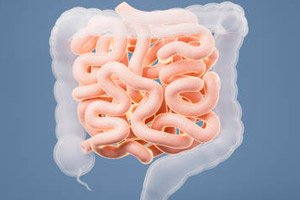
All iLive content is medically reviewed or fact checked to ensure as much factual accuracy as possible.
We have strict sourcing guidelines and only link to reputable media sites, academic research institutions and, whenever possible, medically peer reviewed studies. Note that the numbers in parentheses ([1], [2], etc.) are clickable links to these studies.
If you feel that any of our content is inaccurate, out-of-date, or otherwise questionable, please select it and press Ctrl + Enter.
A breakthrough that reimagines how the gut and brain communicate
Last reviewed: 27.07.2025
 ">
">In a breakthrough study that rethinks the way the gut and brain communicate, researchers have discovered what they call a “neurobiotic sense” — a new system that allows the brain to respond in real time to signals from the microbes living in our gut.
A new study by Duke University School of Medicine neuroscientists Diego Bojorquez, PhD, and M. Maya Kelberer, PhD, and published in the journal Nature, focuses on neuropods, tiny sensory cells that line the epithelium of the colon. These cells recognize a common microbial protein and send rapid signals to the brain that help suppress appetite.
But that’s just the beginning. The team believes this neurobiotic sense could serve as a broader platform for understanding how the gut senses microbes, influencing everything from eating habits to mood — and even how the brain can shape the microbiome in response.
“We were interested in whether the body can recognize microbial signals in real time — not just as an immune or inflammatory response, but as a neural response that immediately influences behavior,”
said Diego Bojorquez, PhD, professor of medicine and neurobiology at Duke University School of Medicine and senior author of the study.
The key ingredient is flagellin, an ancient protein that makes up the bacterial flagellum, the tail-like structure that bacteria use to move. When we eat, some gut bacteria release flagellin. Neuropods detect it through a receptor called TLR5 and send a signal through the vagus nerve, the main line of communication between the gut and the brain.
The team, backed by the US National Institutes of Health, put forward a bold hypothesis: flagellin from bacteria in the colon could activate neuropods and trigger an appetite-suppressing signal to the brain – a direct microbial influence on behaviour.
The researchers tested this by fasting mice overnight and then injecting a small dose of flagellin directly into their colon. These mice ate less.
When the researchers repeated the same experiment in mice that lacked the TLR5 receptor, nothing changed. The mice continued to eat and gained weight—a clue that the pathway helps regulate appetite. The findings suggest that flagellin sends a “enough” signal through TLR5, allowing the gut to tell the brain it’s time to stop eating. Without this receptor, the message doesn’t get through.
The discovery was made possible by the study’s lead authors, Winston Liu, MD, PhD, Emily Olway, both graduate students in the Health Scientists Training Program, and postdoctoral fellow Naama Reicher, PhD. Their experiments showed that disrupting this signaling pathway alters the feeding behavior of mice, suggesting a deeper connection between gut microbes and behavior.
“Looking ahead, I think this work will be particularly useful to the broader scientific community in explaining how microbes influence our behavior,” says Bojorquez.
“The obvious next step is to study how specific diets change the microbial composition in the gut. This could be a key element in solving problems like obesity or mental disorders.”
